Send With Confidence
Partner with the email service trusted by developers and marketers for time-savings, scalability, and delivery expertise.


Time to read: 10 minutes
Text messaging is the most widespread and frequently used communication channel in the world. It has the power to send far more direct and personal messages than email. Nine out of ten consumers want to text with businesses, but only 48 percent of businesses are equipped to do so.
As marketers, it’s important that we tread lightly with our texts. While the benefits of SMS are endless, you can also do more harm than good if you’re not following best practices.
Listed below are 10 of the most common SMS mistakes, along with tips to avoid them. By following our advice, your SMS campaign can be a powerful tool to engage your audience and build a strong relationship with your customers.
A subscription (or promotional) text message refers to any text message sent to a mobile device that is part of a campaign to promote your products or services. Your subscribers have (or should have) opted in to receive such messages, meaning they have given their consent to be contacted in this way.
You can use promotional text messages for various uses:
Nobody likes receiving promotional texts that they didn’t sign up for. Before you start sending mass messages, ensure that you actually have permission to do so.
It’s also important that you comply with state and local regulations and wireless carriers’ messaging policies to make sure your messages get delivered to customers who are willing to receive them.
You can request that your customers sign up for your text messages containing exclusive promotions, product releases, or other valuable information via an online form or by texting a keyword to a mobile shortcode.
"Text JOIN to 44244 to sign up for our text messages and get 10% off your next order!"
By including clear opt-in and opt-out instructions in your texts, you empower your customers by letting them control which marketing messages they wish to receive.
Being transparent with your communication sets the stage for building a positive relationship with your customers.
Sending messages to invalid numbers is the most common reason for SMS delivery problems. Changed (or fake) phone numbers on your texting list won’t reach their intended destination, which can decrease your message deliverability score.
It may be tempting to purchase or borrow contact lists, but these lists can contain fake or invalid numbers. The only way you’ll effectively reach customers is by growing your text subscription list organically.
Use your email customer base as a starting point to grow your SMS list, and encourage others to subscribe by running a contest, offering exclusive discounts to subscribers, and promoting your text list across other media platforms.
To avoid sending messages to invalid numbers, use a reliable API equipped with phone number lookup to ensure the numbers on your list can receive SMS messages. Speak with an expert at Twilio to learn more about SMS API features that can help you send SMS with confidence.
So you’ve got a new subscriber–now what? It’s one thing to attract new customers, but keeping their attention is equally as important.
A common mistake with SMS marketing is not laying the groundwork for future communication. Failing to let your customers know how and when you’ll be in touch can leave them angry and surprised when you hit them with your next message blast.
Once a customer subscribes to your SMS list, send a welcome message explaining how often you’ll be texting, the types of information you’ll be sending, and how they can opt-out.
Make use of keywords to simplify the process and make it clear to your customers how to change their messaging preferences.
WRONG RIGHT
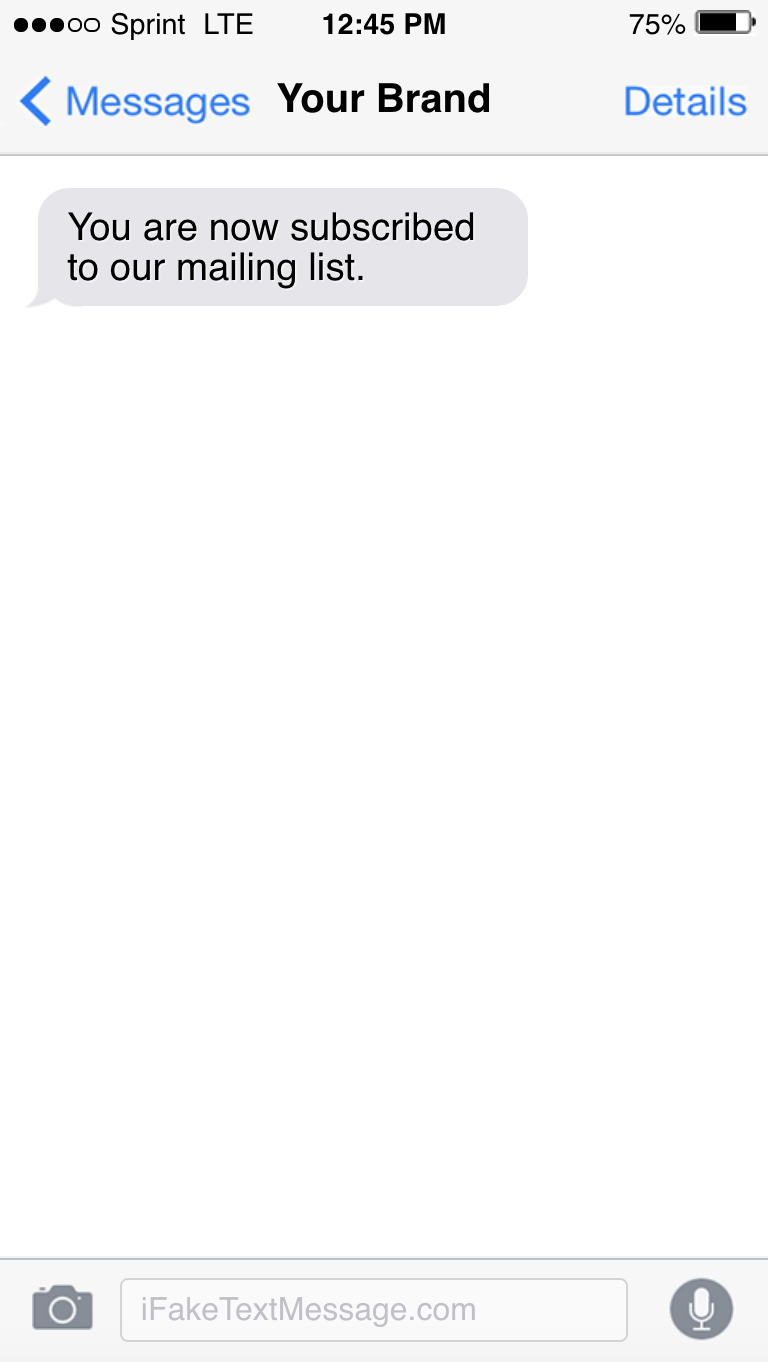
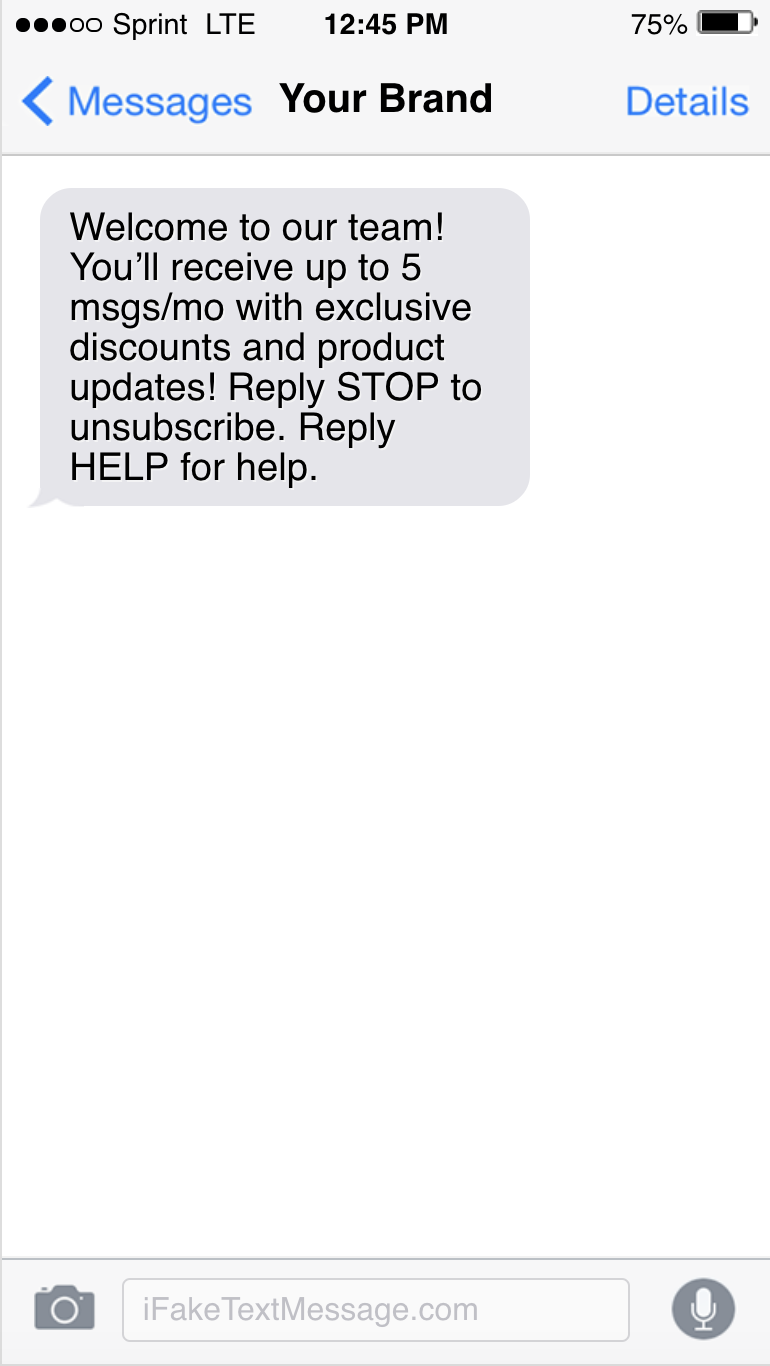
A common mistake that some marketers make is attempting to save time and effort by using the same message for both email and SMS. The problem is, each channel is better tailored to support different types of messages.
Email and SMS each have benefits not offered by the other, and it’s likely that the same message through both channels will hurt your marketing efforts.
Due to its 160-character limit, SMS is the perfect channel for short, time-sensitive promotions and information.
"TODAY ONLY! Get 20% off your purchase when you use code TEXTER at checkout."
Email, on the other hand, is more appropriate for longer messages with images, links, and attachments.
If your message contains information that may need to be saved by your customers for a later time, email is the better route. However, if your message requires immediate action, SMS is the way to go.
For more insight on when to use SMS and when to use email, take our quiz.
Whether you are sending to a global audience or to a local customer base, the timing of your message is everything. SMS is best used to encourage urgent action, so the time that you send your promotion plays a big role in the success of your campaign.
In order to account for time changes with a global audience, select an API provider that systematically scales and optimizes for different countries’ mobile regulations. Since nobody wants to receive a text at 1 AM, use a provider that automatically delivers your messages to your audience at the right time in the right time zone.
Talk to someone at Twilio for more information on how to implement a global SMS program.
Be considerate of your subscribers’ schedules when you’re sending to a local audience. Since SMS is used to inspire immediate action, aim to send at times when your customers won’t be busy, like before or after work, or during lunch. As a general rule, don’t send messages before 9 AM or after 9 PM.
There’s a reason for the 160-character limit for SMS: it’s supposed to be short and sweet! Lots of businesses make the mistake of sending long, spammy texts, which can get broken up in delivery and distort the meaning of your intended message.
By nature, SMS messages are informal and can be quickly read and understood–even from a phone’s lock screen. There is no need for subject lines, intros, or signatures.
Text messaging is a direct and personal channel, and your messages should reflect that. Use your customer’s name, be clear with your information, and even add humor to your messages to build a memorable brand personality.
Customers like talking to businesses through SMS because it feels just like texting a friend. If done correctly, your SMS will seem like a one-on-one conversation with you and every one of your subscribers.
WRONG RIGHT
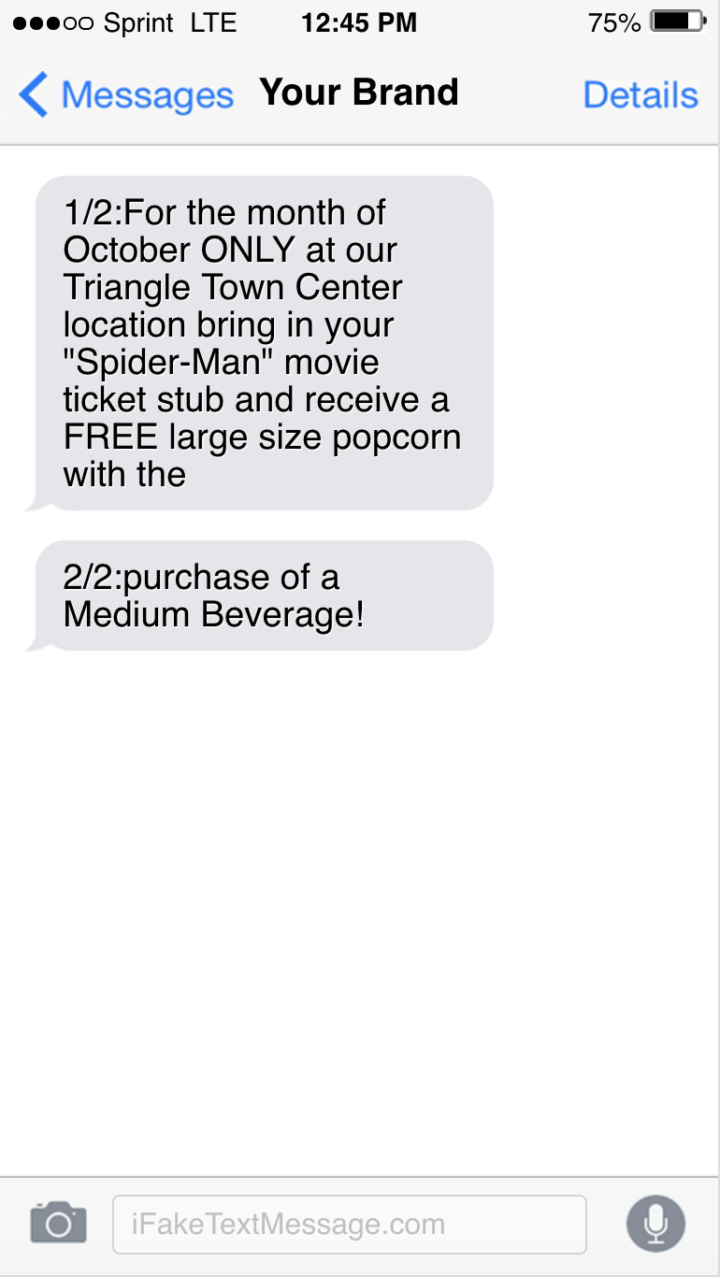
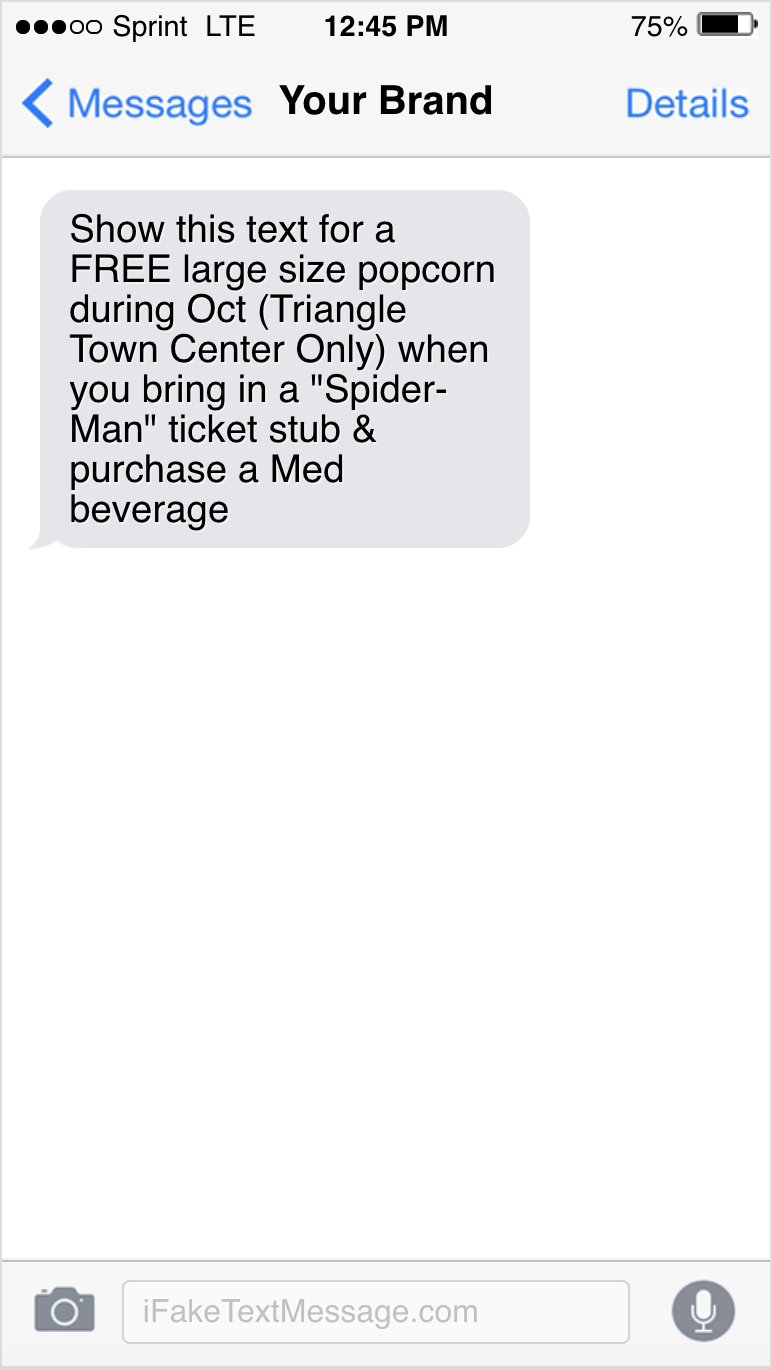
Many businesses fail to capitalize on their SMS marketing by either not using a call-to-action, including multiple calls-to-action, or having one that’s easy to miss.
A call-to-action pushes your customers to complete a task, whether that be subscribing to your mailing list, entering a contest, participating in a sale, or responding to a survey.
Because SMS allows for immediate communication, the call-to-action is the most important part of your text message.
SMS is a powerful channel with the potential to drive short-term action, so take advantage of it! Include one clear call-to-action in your text message that your customers can complete anywhere on their mobile devices.
Keywords are a great way to make your call-to-action easy to recognize and accomplish. Encourage your customers to respond to your texts with specific keywords to participate in exclusive offers. Utilize keywords in your texts to make your messages as straightforward as possible and drive customer action.
WRONG RIGHT
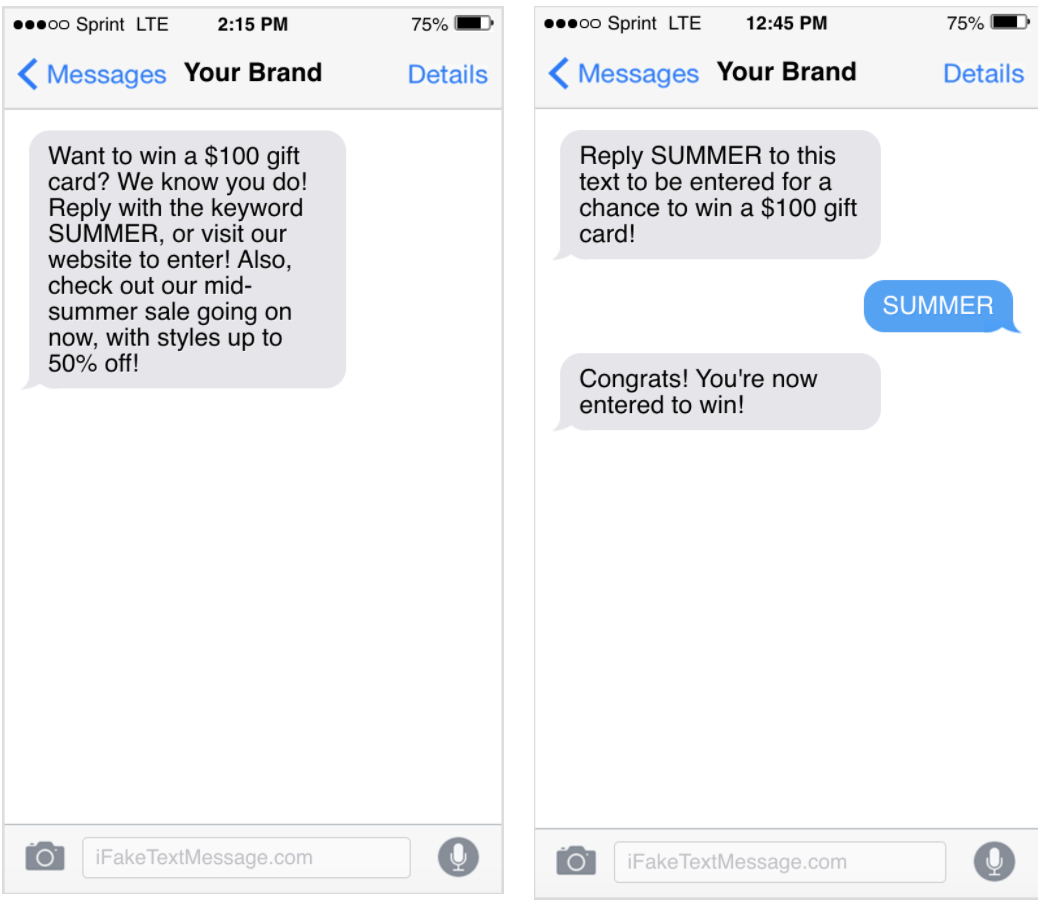
Because the open rate of SMS is over 95 percent, some brands just can’t resist sending text after text with the hopes that each one will yield the same response.
However, if you bombard your subscribers with promotional texts, chances are you’ll annoy your customer base and cause a lot of people to unsubscribe from your list.
Less is more when it comes to SMS. Only text your customers with information that is relevant to them or requires urgent action.
It is best practice to text your customers only once or twice per week. Anything more, and it’s likely that you’ll irritate your customers and damage your brand reputation.
Some brands use SMS to replace email marketing entirely and send all of their messages to their customers’ mobile phones. Other companies neglect SMS altogether and fail to take advantage of the messaging capabilities it has to offer.
Either one of these options is a huge mistake for marketers. SMS and email should work hand-in-hand to create a seamless communication experience for your customers.
Different messages require different channels of communication, and SMS and email should be used to complement one another to build a strong relationship with your customers.
For example, you can send your customer an appointment confirmation via email, and follow up with an SMS message reminder on the day of the appointment.
By combining SMS and email, you put your customers at ease and ensure that they have seamless communication experience with your brand.
For more information on how to effectively use both channels, watch our webcast, A Perfect Match: SMS and Email.
Have you ever heard your phone buzz and expected an important message, when it turned out to be just another marketing text?
Believe it or not, your customers probably don’t care about your newest product update or your latest company news. What they really want is personalized messages that are directly beneficial to them.
Before you send a message, think to yourself: Is this information valuable to my customers? Or is it just another company promotion?
When you really consider your customers’ wants and needs and only send them relevant information, you show your commitment to putting your customers first. Sending meaningful messages is the first step in fostering a positive relationship between your brand and your audience.
WRONG RIGHT
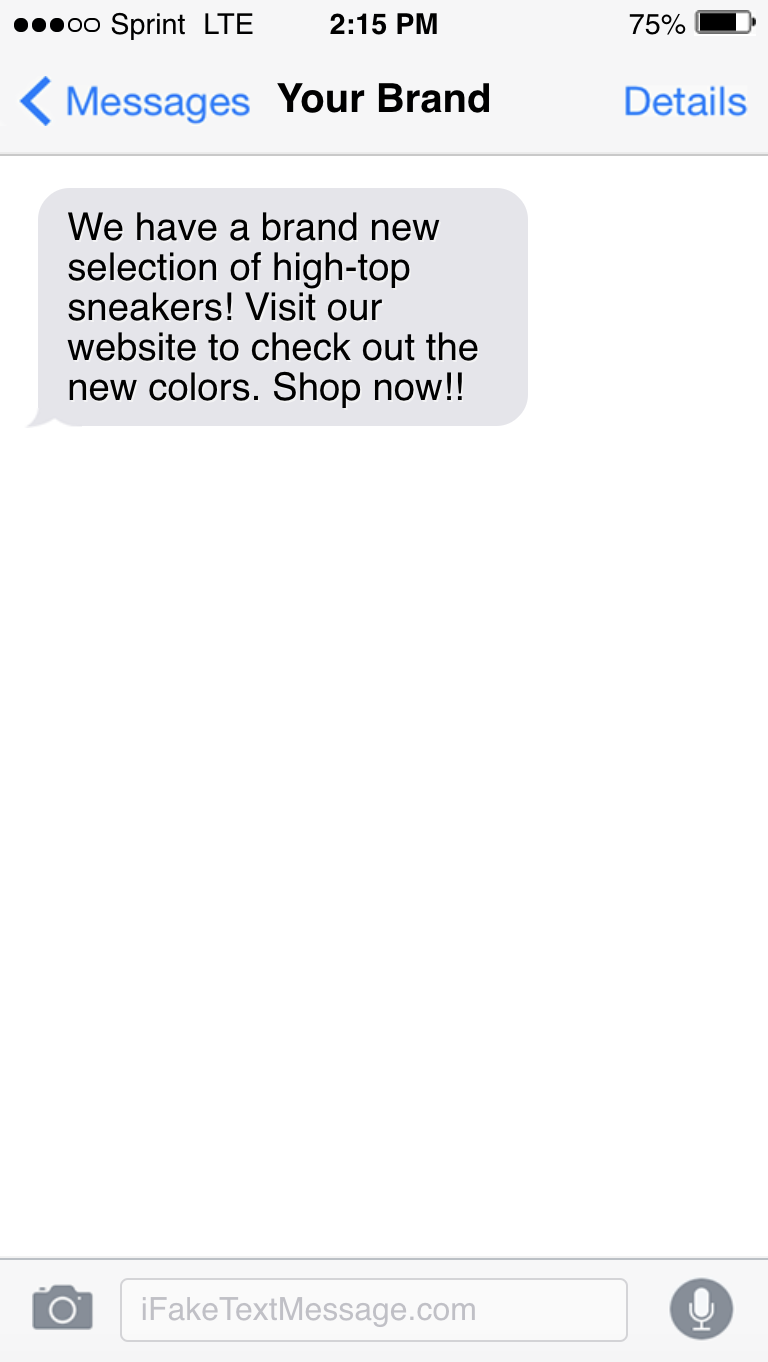
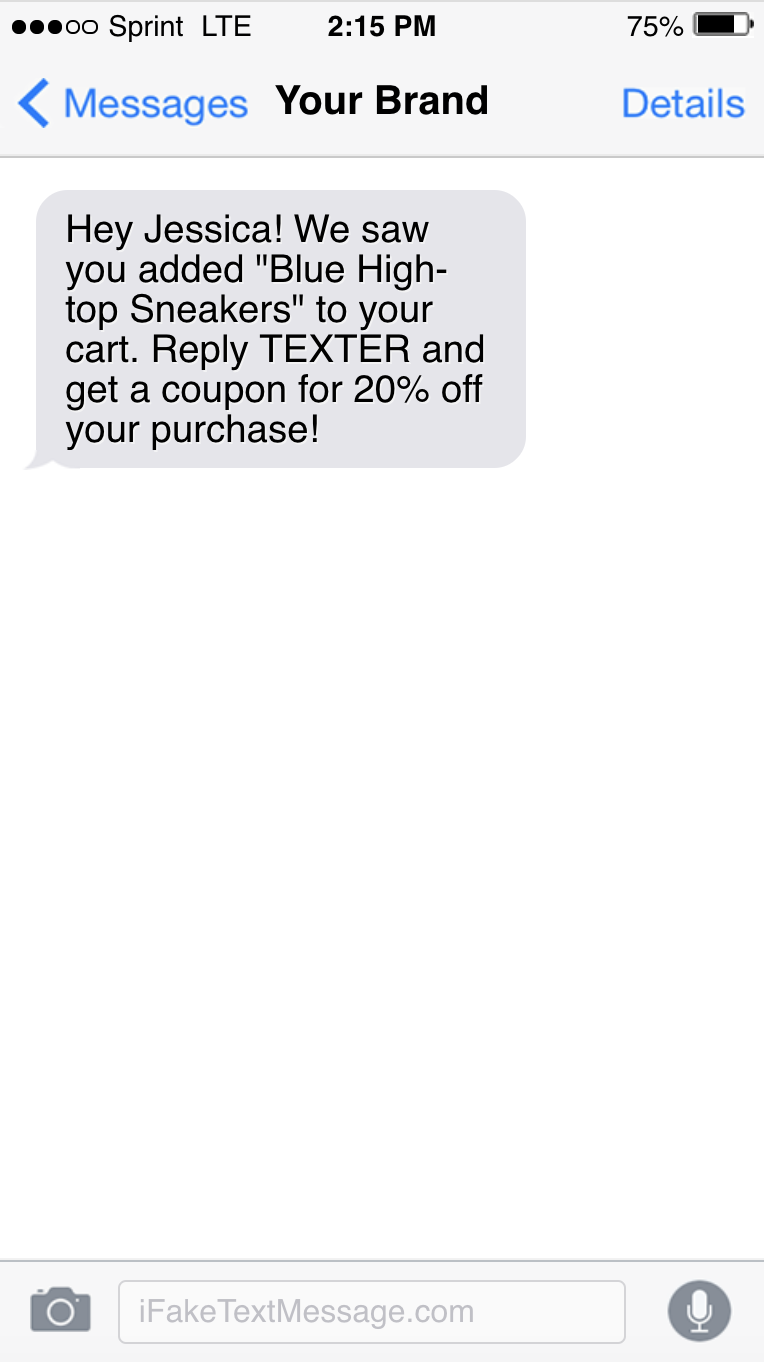
While there is no silver bullet to SMS marketing, it is important to keep in mind these 10 SMS mistakes and plan your campaigns with care and caution.
By putting in the effort to craft effective SMS messages, you’ll not only generate high engagement rates, but also gain an edge over your competitors and build a strong relationship with your customers.
Avoid these 10 SMS marketing mistakes, and you’ll be well on your way to success. Check out our SMS and Email Guide to learn more about how you can use SMS to take your email marketing to the next level.

Partner with the email service trusted by developers and marketers for time-savings, scalability, and delivery expertise.